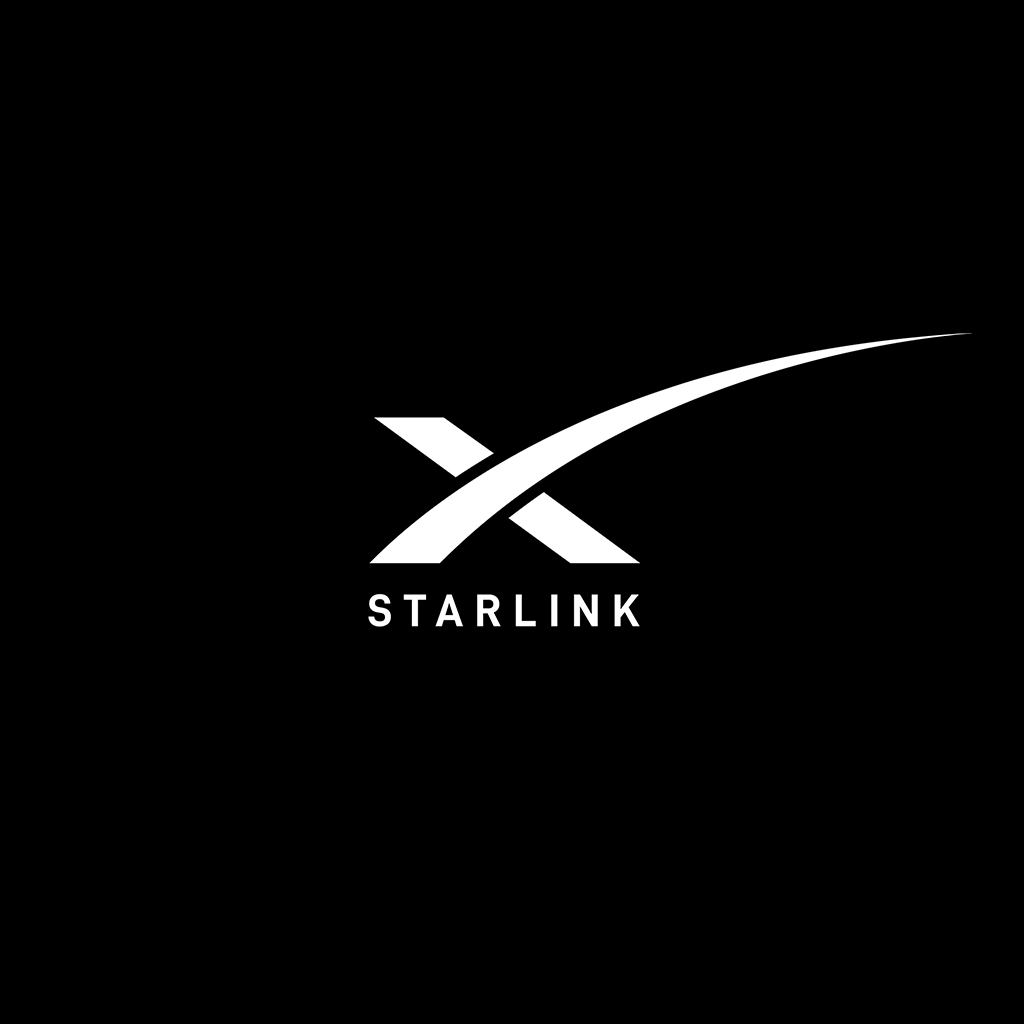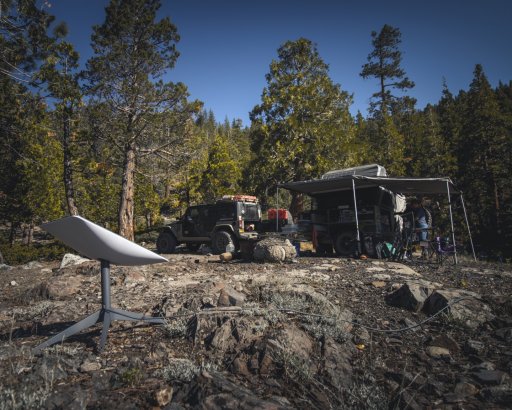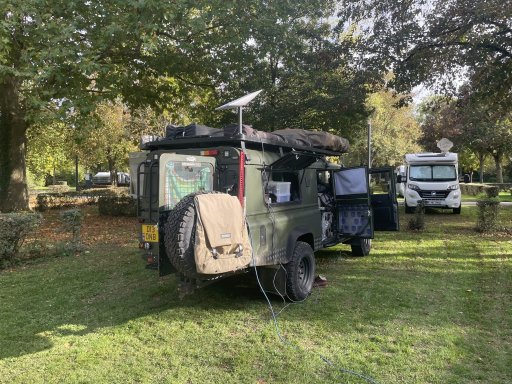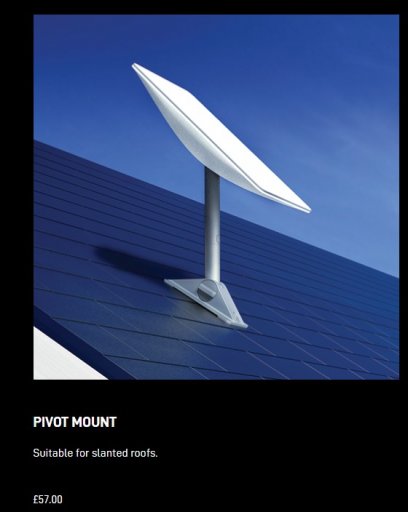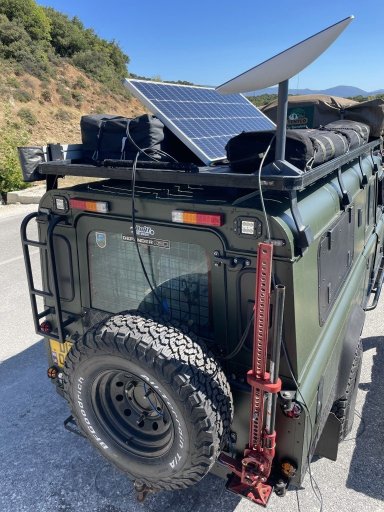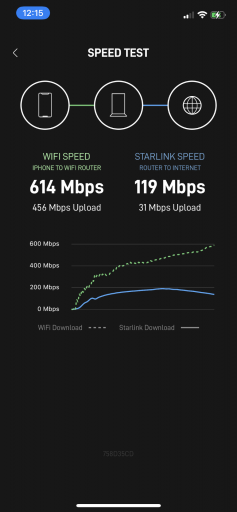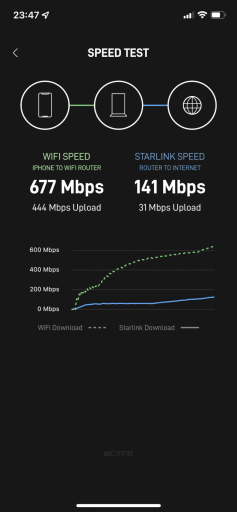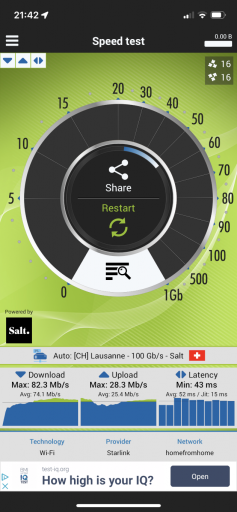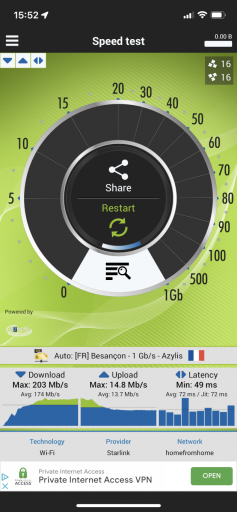I've been using Starlink RV for a while now in the UK and Europe.
Does exactly what is says on the tin - internet, at decent speeds and low latency every time. (Bear in mind, I'm in the UK and Europe, where usage density is no-where near as high as in the States, therefore usage a lot less, for now!).
I was asked in another topic, to post some pics, give some real life usage info and what sort of costs are involved.
I work mainly from home, but also need to either; keep an eye on what's going on at work (check and respond to emails, circulate documents, or log into internet based operational apps etc...), or have the means to work full time, while away from home. This has always been possible, given a half decent 4G cellular signal, but it does need to be a fairly good signal, otherwise speed/bandwidth/latency become a bit restrictive.
In the past, I've tried various antennas, boosters etc.. etc... and found most to be pretty ineffective, without spending a fortune, and even then, a booster can only boost if there's a source signal available. So once out of range of any of the "normal" cellular data transmission methods, contact with the outside World becomes either impossible, or results in travelling around to either find a signal, or some sort of WiFi somewhere (MacDonalds/Starbucks etc...) which is usually pretty poor (at least, it generally is in the UK/Northern Europe).
Having used an internet connection provided by a friend's Residential Starlink deployed in a (fixed) location with very poor cellular service a couple years ago, I was quickly aware that this could be the solution to my problem for internet reception while travelling, but, Portability and RV weren't a thing back then, so it didn't quite provide the solution.
Fast forward a year or so, and not only was there Residential with Portability, but RV became available. I did some research and "Googling" and RV looked to be the solution I was looking for.
The advantage of RV is that the monthly billing can be stopped when not needed and turned back on whenever needed (but is billed in full monthly cycles).
I purchased back in July '22 for £584 for the hardware and the first monthly bill was £114. This reduced to £95 per month, and at the moment, there's a UK limited time offer on to purchase the hardware for £300 and the monthly bill is now down to £75.
In use, across Europe last year, it never missed a beat, even when it didn't have a completely clear view and was warning of obstructions, I carried on working without a problem.
It really is a game changer for those who work while travelling. No more struggling with poor cellular signal, or looking for free, or paid, WiFi. Just plug it all in, wait a few minutes, and it's on line.
At the moment, I power it via an inverter, but it is possible to run it off a 12v system using a (48-56v) POE injector, although it does mean chopping the cable to the dish and doing a bit of a wiring mod. Check out
Tucks Truck - Starlink for Overlanders for a lot more info.
Some pics:
Mounted on the rook rack using a Starlink pivot mount, In this one, it was partly obstructed by the trees, but I still managed a Teams meeting on the laptop with no drop outs.
View attachment 254837 View attachment 254838
This one was taken in the mountains in the North of Greece, miles from anywhere, with no phone signal. We watched the Queen's funeral on the Ipad (ignore the rough and ready solar panel mounting, it was thrown up in a rush to get some battery charging on quickly!).
View attachment 254839
Some screen shots of speeds:
View attachment 254845 View attachment 254846 View attachment 254847 View attachment 254848
All in all, as a work tool, it's more than paid for itself and gives me the real luxury of being able to work while travelling away from home.
I have been looking at doing the 12v conversion, but, for now, there's no real need. It's power consumption is pretty minimal, and as long as I have either good solar power, or on an electric hook up, no real issue running it off the inverter. But if you were going to be completely off grid for any length of time, the 12v conversion would be worth considering, although it would mean invalidating any warranty, if still covered.

